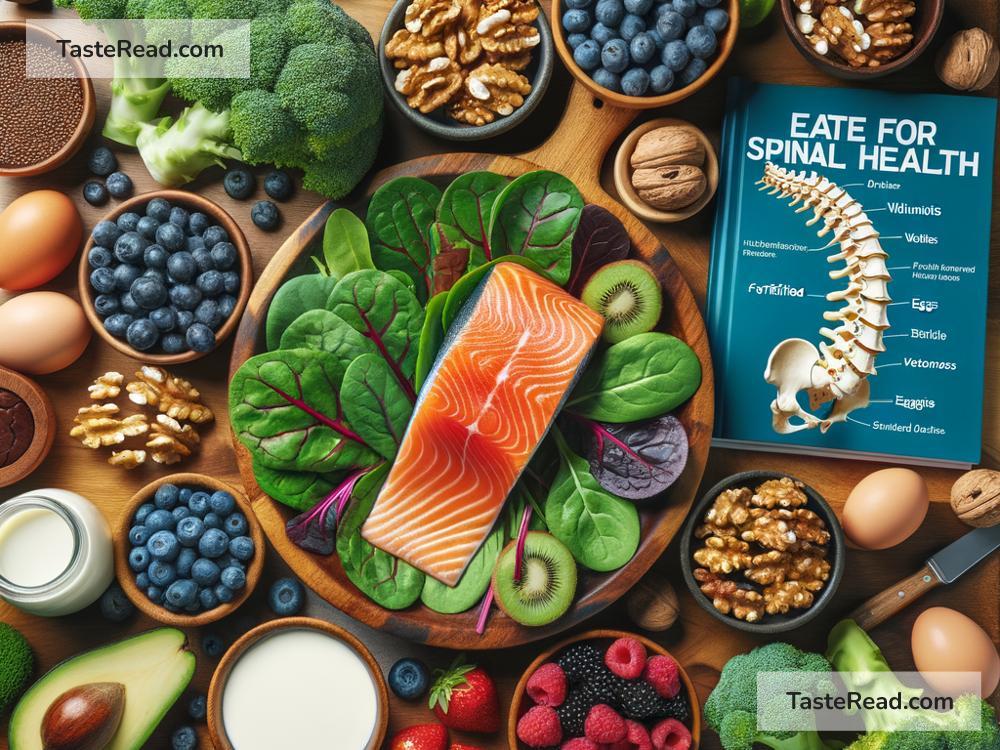Foods That Improve Vertebral Health: Simple and Effective Tips
Your spine—or vertebral column—is critical to maintaining your body’s structure, movement, and overall health. A healthy spine provides the strength to carry your body’s weight, flexibility for movement, and protection for the delicate nerves traveling through it. But here’s the big question: Did you know the foods you eat can make a huge difference in keeping your vertebrae healthy and strong?
While spine health depends on proper posture, regular exercise, and avoiding injuries, diet plays an equally important role. Nutrient-rich foods can help maintain strong bones, lubricate joints, and reduce inflammation. Let’s dive into some of the best foods for vertebral health.
1. Calcium-Rich Foods for Strong Bones
The backbone of strong vertebrae is healthy bones, and calcium plays a key role in maintaining bone density and preventing fractures. If your diet lacks enough calcium, your bones can weaken over time, increasing your risk of conditions like osteoporosis.
Here are some calcium-rich food options:
– Milk and yogurt
– Cheese, like cheddar or mozzarella
– Leafy greens, such as spinach, kale, and collard greens
– Almonds
– Fortified plant-based milk, like almond or soy milk
– Tofu
If you’re lactose intolerant or prefer non-dairy options, you can still get plenty of calcium from leafy greens and alternatives like fortified plant-based drinks.
2. Vitamin D: The Calcium Helper
Vitamin D is essential because it helps your body absorb calcium properly. Without enough vitamin D, even the best calcium-rich diet won’t do much for your vertebrae. The good news? Many foods are naturally rich in vitamin D, and your skin can produce it when exposed to sunlight.
Foods high in vitamin D include:
– Fatty fish (e.g., salmon, mackerel, and tuna)
– Egg yolks
– Fortified cereal
– Mushrooms exposed to sunlight
– Fortified orange juice
To boost your intake, aim for 10–30 minutes of sunlight exposure several times a week, depending on your skin tone and sensitivity.
3. Magnesium for Bone Stability
Magnesium is another crucial mineral your body needs to keep your vertebrae strong and stable. It helps regulate calcium levels and improves bone strength. A magnesium deficiency can lead to weak bones, muscle cramps, and back pain.
Some magnesium-rich foods include:
– Nuts, such as almonds, cashews, and Brazil nuts
– Seeds, like pumpkin, chia, and flaxseeds
– Whole grains, including brown rice and quinoa
– Spinach and other leafy greens
– Avocados
– Dark chocolate (yes, a sweet treat can be spine-friendly!)
4. Omega-3 Fatty Acids for Reduced Inflammation
Inflammation in the spine can lead to stiffness, pain, and joint damage. Omega-3 fatty acids are known for their anti-inflammatory properties, which can help reduce swelling and improve joint mobility.
Foods that are rich in omega-3s include:
– Fatty fish (e.g., salmon, sardines, and mackerel)
– Walnuts
– Chia seeds
– Flaxseeds
– Edamame (young soybeans)
Adding omega-3-rich foods to your meals regularly can promote spine health while also benefiting your heart and brain.
5. Vitamin C for Collagen Production
Did you know collagen is an important protein that supports the soft tissues around your spine? Vitamin C is essential for producing collagen, which keeps your vertebrae and discs strong and flexible. It also helps fight inflammation and supports immune health.
Boost your vitamin C intake with these foods:
– Citrus fruits, like oranges, lemons, and grapefruits
– Strawberries
– Bell peppers
– Broccoli
– Pineapple
– Kiwi
A colorful plate of fruits and veggies packed with vitamin C can contribute significantly to your vertebral health.
6. Protein for Tissue Repair
Protein isn’t just about building muscles; it’s vital for repairing and maintaining the tissues surrounding your spine, including ligaments, tendons, and cartilage. Ensuring adequate protein intake can enhance recovery if you’ve experienced a back injury or strain.
Include these protein-rich options:
– Lean meat, such as chicken or turkey
– Fish
– Eggs
– Beans and lentils
– Greek yogurt
– Nuts and seeds
For vegetarians or vegans, plant-based proteins like lentils, beans, tofu, and tempeh are excellent choices.
7. Antioxidants to Fight Free Radicals
Free radicals can damage your spine over time, leading to inflammation and degenerative changes. Antioxidants help neutralize these harmful particles and protect your vertebral health.
Foods rich in antioxidants include:
– Blueberries, raspberries, and other berries
– Green tea
– Dark chocolate (75% or higher cocoa content)
– Nuts, such as walnuts and pecans
– Spinach and kale
Antioxidants also promote better overall health, so they’re worth adding to your daily diet.
8. Water for Spine Hydration
Though it’s not technically a food, water is essential for your spine’s health. Your spinal discs, which act as cushions between your vertebrae, are largely made up of water. Proper hydration helps keep them plump and functional, reducing the risk of back pain and injury.
Aim for 8–10 glasses of water daily to keep your spine hydrated and healthy.
Final Thoughts
Taking care of your spine isn’t just about avoiding heavy lifting or sitting up straight—it involves nourishing your body with the right foods. From calcium and vitamin D for bone strength to omega-3s and antioxidants for inflammation reduction, your diet can play a pivotal role in promoting vertebral health.
Remember to incorporate a variety of these nutritious foods into your daily meals and stay hydrated. Combined with regular exercise, good posture, and a healthy lifestyle, you’ll be giving your spine the support it needs to stay strong and pain-free for years to come.
Stay healthy—and don’t forget to treat your spine to the care it deserves!


